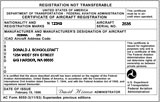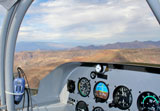|
AirworthinessThe term “airworthy” is important to understand when seeking an FAA aircraft certification. The definition is not published in the regulations, but FAA case law has identified two conditions that must be met for an aircraft to be considered airworthy. The following two conditions are stated in FAR Part 21.183(a), (b), and (c) and must be complied with before the FAA will issue an airworthiness certificate: 1. The aircraft must conform to its Type Certificate (TC). Conformity to type design is considered attained when the aircraft configuration and the components installed are consistent with the drawings, specifications, and other data that are part of the TC, which includes any supplemental type certificates (STC) and field approved alterations incorporated into the aircraft. 2. The aircraft must be in a condition for safe operation. This refers to the condition of the aircraft relative to wear and deterioration, for example, skin corrosion, window de-lamination/crazing, fluid leaks, and tire wear. If either of the two conditions above cannot be met, the aircraft is considered to be un-airworthy. Note: A special flight permit may be issued for aircraft that do not meet the applicable airworthiness requirements, but are capable of safe flight. Of course, the goal for those persons who operate and maintain aircraft is to keep them in an airworthy condition. The FAA refers to this condition as “continued airworthiness”.
Back to Standard Airworthiness Certification page
|









